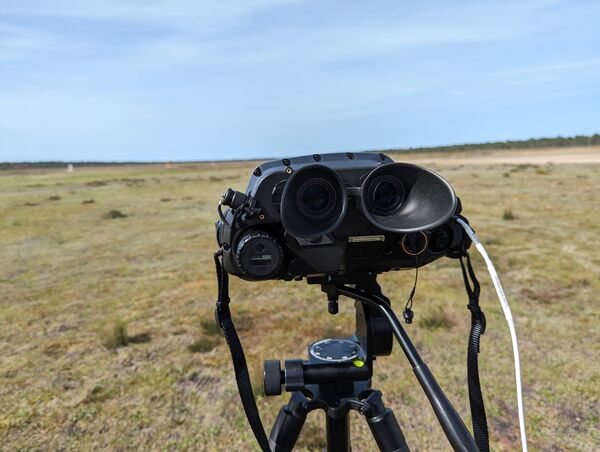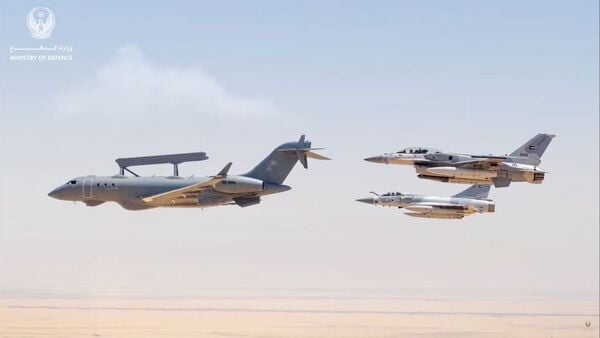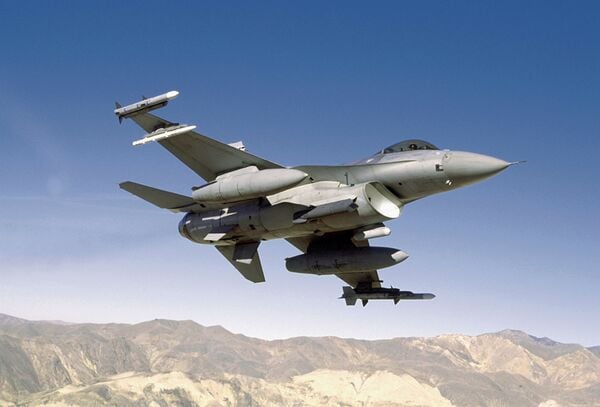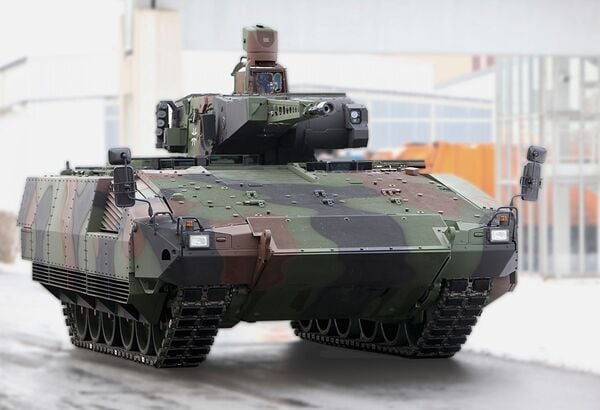- About
- Intara
- Capabilities
- Advisory
- Resources
- News
- Store
SOFINS 2023: Thales demos Sophie Ultima's long-range targeting capability
30 March 2023
by Amael Kotlarski


Thales Sophie Ultima. (Janes/Amael Kotlarski)
Thales demonstrated the Far Target Location (FTL) capabilities of its Sophie Ultima thermal imager at the SOFINS 2023 exhibition in Bordeaux, France.
Sophie Ultima features an optical day channel with a 20º wide field-of-view and unlike earlier members of the Sophie family is fitted with a continuous zoom function, which helps to maintain the target in sight at extended distances. The system is equipped with a cooled thermal imager that supports a 6 km detect, recognise, and identify range for a standard NATO tank-sized target. The system also supports picture-in-picture (PIP) functionality, as well as augmented reality and the ability to download and upload imagery. Cartography maps, specifically orthoimagery, can be loaded into the onboard memory with a maximum size of 200×200 km.
The imager is also equipped with a laser rangefinder with an effective range of 15 km. The overall system weighs 2.7 kg and can be used handheld or mounted on a tripod. According to Thales, in average ambient temperatures, the thermal sensors take three-and-a-half minutes to reach operating temperatures.
UAE inaugurates GlobalEye early warning aircraft
25 April 2024
by Jeremy Binnie


The UAE's fourth Saab GlobalEye was delivered on 18 April. (Ministry of Defence of the United Arab Emirates)
The Ministry of Defence (MoD) of the United Arab Emirates (UAE) announced on 24 April that a reception ceremony for an early warning aircraft had been held at Al-Dhafra Air Base.
It cited Major General Ibrahim Nasser al-Alawi, the commander of the Air Force and Air Defence (AFAD), as saying the aircraft was a “qualitative addition” that will help protect the country's strategic interests.
The MoD released a video showing a Saab GlobalEye airborne early warning and control (AEW&C) aircraft without AFAD markings being escorted by F-16 and Mirage 2000-9 fighters before landing at Al-Dhafra, as well as personnel with 8th Aviation Wing badges working at a ground station.
Saab confirmed on the following day that it delivered the fourth of five GlobalEyes ordered by the UAE on 18 April.
Lockheed Martin to ramp up UK Sniper production
24 April 2024
by Gerrard Cowan


Seen being carried by a US Air Force F-16, the Sniper ATP is built in Florida in the US and Bedfordshire in the UK. Lockheed Martin is now ramping up UK component production to meet increased customer demand. (Lockheed Martin)
Lockheed Martin is building a new production line for AN/AAQ-33 Sniper Advanced Targeting Pod (ATP) components at its Ampthill, Bedfordshire site in the UK, seeking to meet anticipated demand from NATO allies and other customers for the system, the company has told Janes .
The UK-based work on Sniper supports the manufacturing activities at Ocala, Florida. This work has been expanded with a new production line at Ampthill that will focus on producing cabling to integrate the system into aircraft.
Stacy Kubicek, Lockheed Martin's vice-president and general manager – sensors and global sustainment, said the fresh investment is part of a wider strategy at Lockheed Martin. She placed it into the context of a shifting outlook among customers.
Germany orders simulators for Puma IFVs
19 April 2024
by Olivia Savage


The Bundeswehr has ordered 258 sets of AGDUS systems for its Puma IFVs following successful integration tests. (PSM GmbH)
The Bundeswehr is receiving new training simulators for its Puma infantry fighting vehicles (IFVs).
In total, 258 sets of Training Device, Duel Simulator (Ausbildungsgerät Duellsimulator: AGDUS) systems are being delivered for the Puma IFVs by the end of 2026, the Bundeswehr announced on 15 April.
The EUR109 million (USD116 million) contract will be financed from the EUR100 billion Bundeswehr special fund.
A Rheinmetall/Krauss-Maffei Wegmann (KMW) consortium received an order from the Bundeswehr in December 2019 valued at EUR54 million for the provision of six AGDUS systems for integration tests on the Puma. Full-scale serial production of AGDUS would then begin once testing was complete, with up to 252 Puma IFVs being equipped with the systems for EUR88 million.
A Rheinmetall spokesperson confirmed to Janes that the company, along with KMW+Nexter Defense Systems (KNDS) Germany, are supplying the new AGDUS simulators to the Bundeswehr and that full-scale production has now officially begun.
Thales demonstrated the Far Target Location (FTL) capabilities of its Sophie Ultima thermal imager a...
Latest Podcasts
Iran Israel analysis
In this podcast Janes analysts discuss the Iranian attacks on Israel on the 14 April. They highlight the military systems used by Iran and the performance and impact of these on Israel. They also discuss the implications of this attack goi...
Listen nowJanes Case Studies
Using Janes Intara to build a common intelligence picture: Russian build up on the Ukrainian border
View Case StudyNews Categories
 C4ISR Details
C4ISR Details